Celebrate International Polar Bear Day
As an Amazon Associate, I earn from qualifying purchases. We may receive a commission for purchases made through these links. This site also contains affiliate links to products besides Amazon, like Etsy. We may receive a commission for purchases made through those links too (at no additional cost to you).
Do you ever wonder how and why people celebrate International Polar Bear Day? Every year there are two different occasions where you can celebrate Polar Bears; International Polar Bear Day (February 27), and Polar Bear week which falls on the first full week in November. In 2022, it will be on November 6-12.
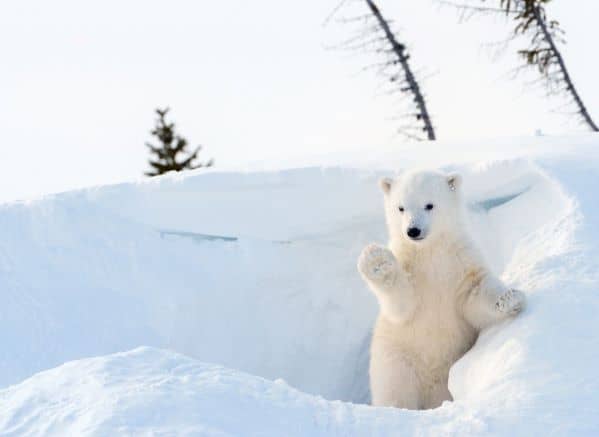
The goal on these days is to raise awareness about these magnificent creatures and the threats that they currently face. This can be done in a variety of different ways at home, school, or any organization that chooses to participate. The hope is that the more people learn and start to care about these animals, the more likely they are to try to help save them through different conservation efforts.
What are Polar Bears?
People refer to Polar bears by several names such as Ice Bear, White Bear, and their scientific name Ursus maritimus which translates to Sea Bear. They are considered the largest terrestrial carnivore, which simply means that they are the largest animal that lives on land and eats meat. Though Polar Bears do live on land, they are considered marine mammals because they spend a large chunk of their lives on sea ice and depend on the ocean for food and survival.
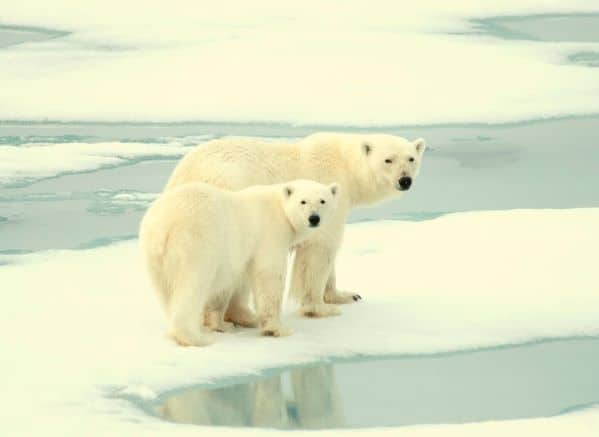
What do Polar Bears eat?
Polar Bears primarily feed on blubber from seals because the fat helps them survive during the months when food can be hard to find. Sea Bears can also feed on fish, birds, whales, and even on small amounts of vegetation.
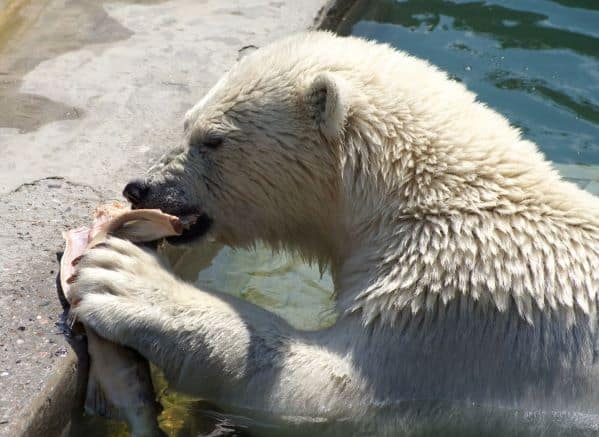
How big are they?
Male bears do grow larger than females and can stand up to 10 ft tall on their hind legs and weigh over 1700lbs. Ice Bears tend to be solitary animals with a few exceptions, like mother bears and their cubs. Other exceptions are males and females during breeding season or if there are plenty of resources available for multiple bears. In the wild bears live on average around 20 years and in captivity, they can live up to 40.
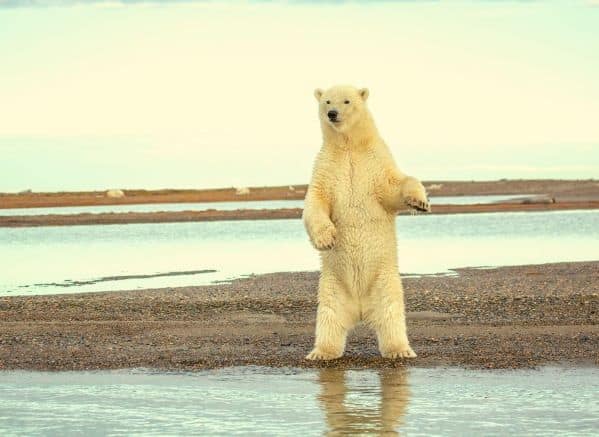
Breeding and Cubs
Breeding typically lasts from March to May or June and the cubs are usually born in November or December. Females will find and stay inside a den during the last stage of their pregnancy until they emerge with their cubs in the spring. They give birth on average to 2 cubs and raise them alone until the cub reaches around 2-3 years old. At this point, the cub will go off on its own. Males do not participate in raising their cubs and may in fact eat cubs that they find if they are hungry.
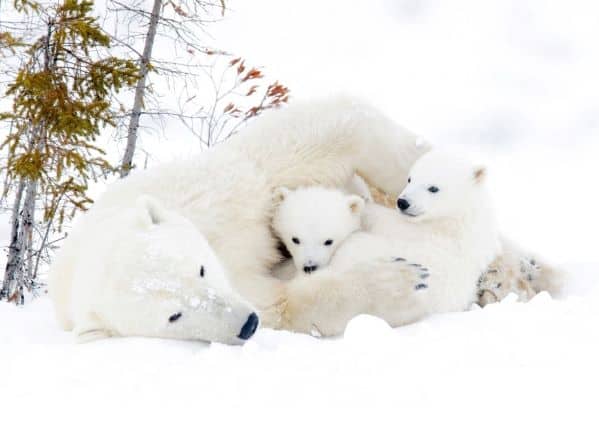
Are Polar Bears Endangered?
Polar bears are considered threatened and in the United States, are protected under the marine mammal act. They live in the Arctic Circle and their range covers several different countries. The main issue threatening their survival is the loss of habitat including the ice caps that make up their hunting ground. Because of this, many of the bears are slowly starting to starve and travel further south looking for food. Unfortunately, this means they are coming into more conflict with humans which is their main and often only predator.
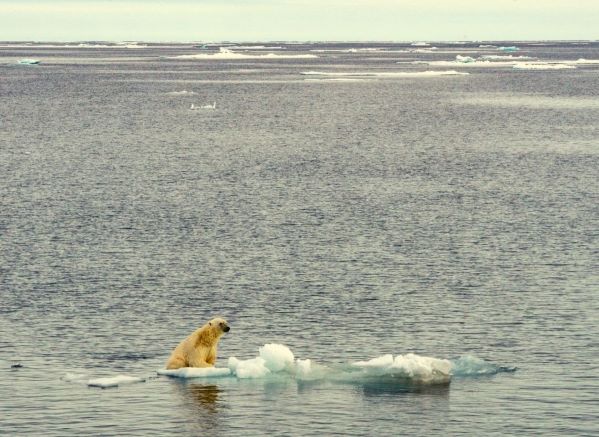
Where Can I See a Polar Bear?
You can see Polar Bears either by visiting certain zoos or by traveling to the Arctic Circle to find them in their natural habitats. The best bet to see one is by visiting an accredited zoo. This way you have the best odds of seeing the bear in a safe manner and you know the type of care that they are receiving.
How do I see a Polar Bear at a zoo?
Accredited zoos do have to meet higher standards in the running of the facility and the care of the animals that they house than facilities that don’t have any accreditation at all. The exception to being guaranteed to see the bear is if it is off exhibit that day for health or maintenance reasons.
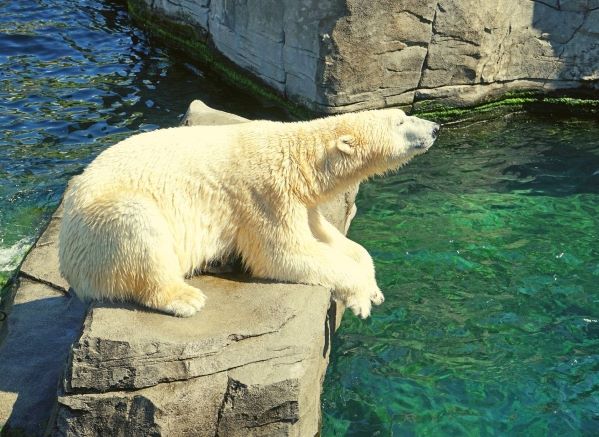
Before you plan a trip, remember to check with the facility for updated information to make sure that the animal or animals that you want to see are still there and will be out on exhibit. Not every zoo is able to house polar bears because they don’t do well in high heat so you will have better luck visiting a zoo that is in a colder climate.
If you are in the United States, here is a list of zoos that currently house polar bears:
- ABQ Bio Park Zoo
- Alaska Zoo
- Brookfield Zoo
- Buffalo Zoo
- Cincinnati Zoo
- Columbus Zoo
- Como Zoo
- Detroit Zoo
- Henry Vilas Zoo
- Kansas City Zoo
- Lincoln Park Zoo
- Louisville Zoo
- Memphis Zoo
- Milwaukee County Zoo
- North Carolina Zoo
- Pittsburgh Zoo
- Port Defiance Zoo
- Saint Louis Zoo
- Sand Diego Zoo
- Seneca Park Zoo
- Toledo Zoo
- Hogle Zoo
Where Can I see a Polar Bear in the Wild?
If you want to try to see a polar bear in its natural habitat, you will want to travel North near the Arctic. Polar bears have been found in Canada (Manitoba and Nunavut), Norway (Svalbard), Alaska (Kaktouik), Greenland, and Russia (Wrangel Island and Franz Josef Land). You will want to do a bit of research to discover what time of year will increase your odds of seeing them and to find a reputable tour guide that can help you find and watch the bears safely.
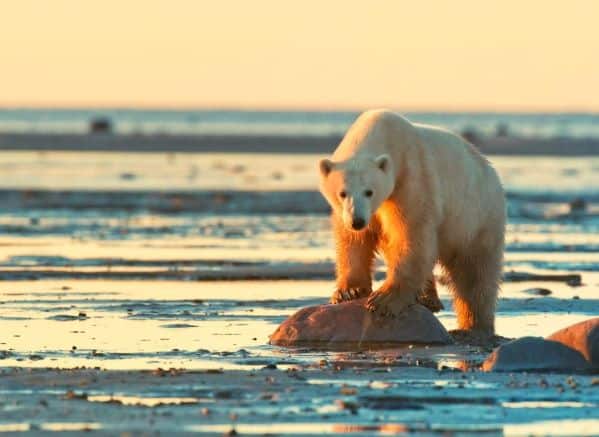
Fun Facts:
- International Polar Bear Day happens in February when mother bears and their cubs are still living and sleeping in their dens.
- International Polar Bear Week in November coincides with their fall migration in Canada. This is when they start to gather around waiting for the Hudson Bay to freeze enough so they can start hunting seals again.
- Polar Bears have black skin, and their hair follicles are actually clear.
How to celebrate International Polar Bear Day
There are several fantastic ways to celebrate International Polar Day and/or Week. These occasions were created to spread awareness about the species and educate people about the different things they can do to make sure Polar Bears will be around in the future and there are plenty of ways that you can help.
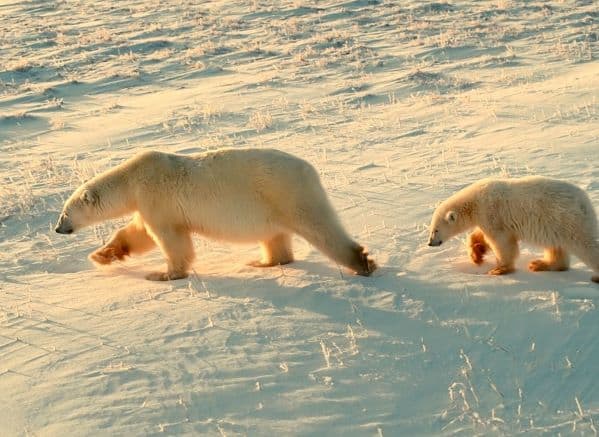
Play games and make crafts
When people get excited and make a connection to a particular species, they are more likely to care more about the efforts made to save them. Playing polar bear-themed games and making crafts are great ways to educate people about this particular species of bear. Pinterest is full of great ideas from cupcakes to games and crafts. Polar Bear International also has some kid-friendly activities on its website.

Visit a reputable zoo to see Polar Bears
Get excited about Polar Bears by going to see one! Many zoos will also host events or have a booth set up to help spread awareness on the animal’s dedicated day and week.
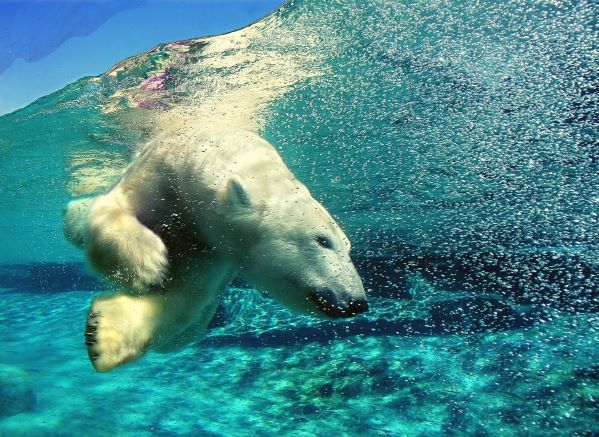
Adopt a Polar Bear
Several non-profit organizations will allow you to adopt a polar bear. Many of these programs come with a stuffed bear and possibly some other benefits. Your donation will go towards their conservation efforts. This is a nice tangible way to present proof of donation if you decide to give it as a gift to a special someone.

Buy a Fahlo Polar Bear International Bracelet
Fahlo is a non-profit that partners with several other notable wildlife foundations like Polar Bear International, Save the Elephants, Sea Turtle Conservancy, and more. There are several color themes to choose from. With each Polar Bear bracelet, you will also be given a card that will introduce you to your specific bear (name, picture, and backstory), and show you how to track them as they live their life.
With each purchase, a donation (10% of net profits) is sent to Polar Bear International so they can continue their conservation efforts.
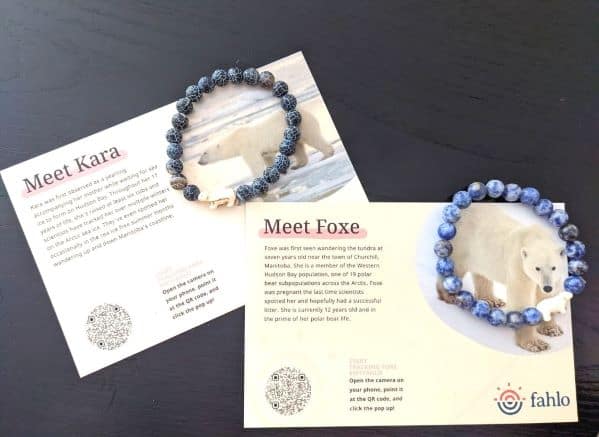
As a Fahlo Brand Ambassador, I earn from qualifying purchases. If you are interested in purchasing some of their bracelets you can use our code for a 20% discount: PENNIESPLACESANDPAWS20.
Make a Donation
Several foundations do great Polar Bear conservation work and accept donations like Polar Bear International or World Wildlife Fund. A direct donation to foundations like these is great because you can be confident that all your money is going to them.

If you choose to make a donation through your local zoo or other local non-profits, it’s always best to confirm exactly how it will be used. Many donations end up getting dispersed over several causes including the company itself so you will always want to verify (in writing if possible) if you do want your donation to go to a particular cause. It is also best to verify that you are donating to a valid foundation, especially if it is a company that you have discovered online.
Live More Sustainably
Polar Bears are suffering from loss of habitat and starvation due to shrinking ice caps in the Arctic Circle. Choosing more sustainable options in your everyday life will reduce carbon emissions and help the environment. This in turn helps limit climate change and global warming which is the largest factor for the melting ice caps.

There are plenty of ways to do this by reducing single-use plastics in your everyday life, buying local, planting eco-friendly gardens, and more. If you’d like some help getting ideas on how you can start making some simple changes, we have put together options in our Earth Day post.
Why Bother?
It may feel like one person’s choices will not make a difference but think of what a huge impact it would make if we all make even a small change. When everyday people start showing that they care about the effects on our environment, businesses will follow and that will make the largest difference. It all starts with one person making one small change, why not you?
Pin For Later:
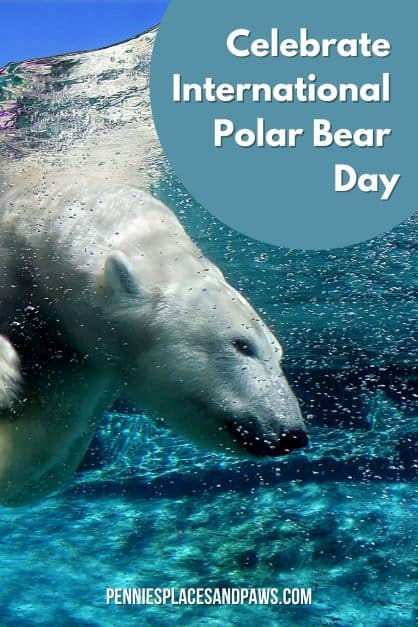
Amazon and the Amazon logo are trademarks of Amazon.com, Inc, or its affiliates.







I’ve always loved polar bears! It makes me sad when zoos give them terrible exhibits. Gonna celebrate International Polar Bear Day this year!
They are such majestic creatures!
They are amazing!
It was so disheartening to see an emaciated polar bear, wandering the melted ice caps. We need to celebrate this day and protect these animals. Our world is suffering…Misskorang
I hope we can turn things around to save as many animals as possible!
This was a wonderful in-depth post about polar bears. I remember seeing them at the zoo many years ago. They are beautiful. I am working on doing everything I can to improve the climate. Thanks for sharing.
Thanks for doing what you can! Small steps still covers the distance 🙂
I was lucky enough to see polar bears while they were still at the Oregon Zoo. They are HUGE!
So big!!! But very personable 🙂
Every time I see videos on the melting ice caps, I feel like they show a starving polar bear. It breaks my heart. Seriously hoping we can turn global warming around to help these guys out.
I hope so too!
This is such a cool information! Thank you for educating:)
What a wonderful nod to the polar bear! It always breaks my to see what’s happening to them largely due to man-made climate issues.
Yes, its hard seeing them suffer so much
Great information about polar bears and what we can do on our part. They are beautiful animals!
Polar bears are magnificent creatures. I would love to see them in the wild one day.
Me too!
Beautiful post about these magnificent animals. I definitely feel concern about their diminishing habitat. I need to adopt one or at least make a donation.
Our business goal this year is to start donating to worthy causes 🙂 We are also still working on switching over to more sustainable options around the house. It’s nice when everyone does what they can!